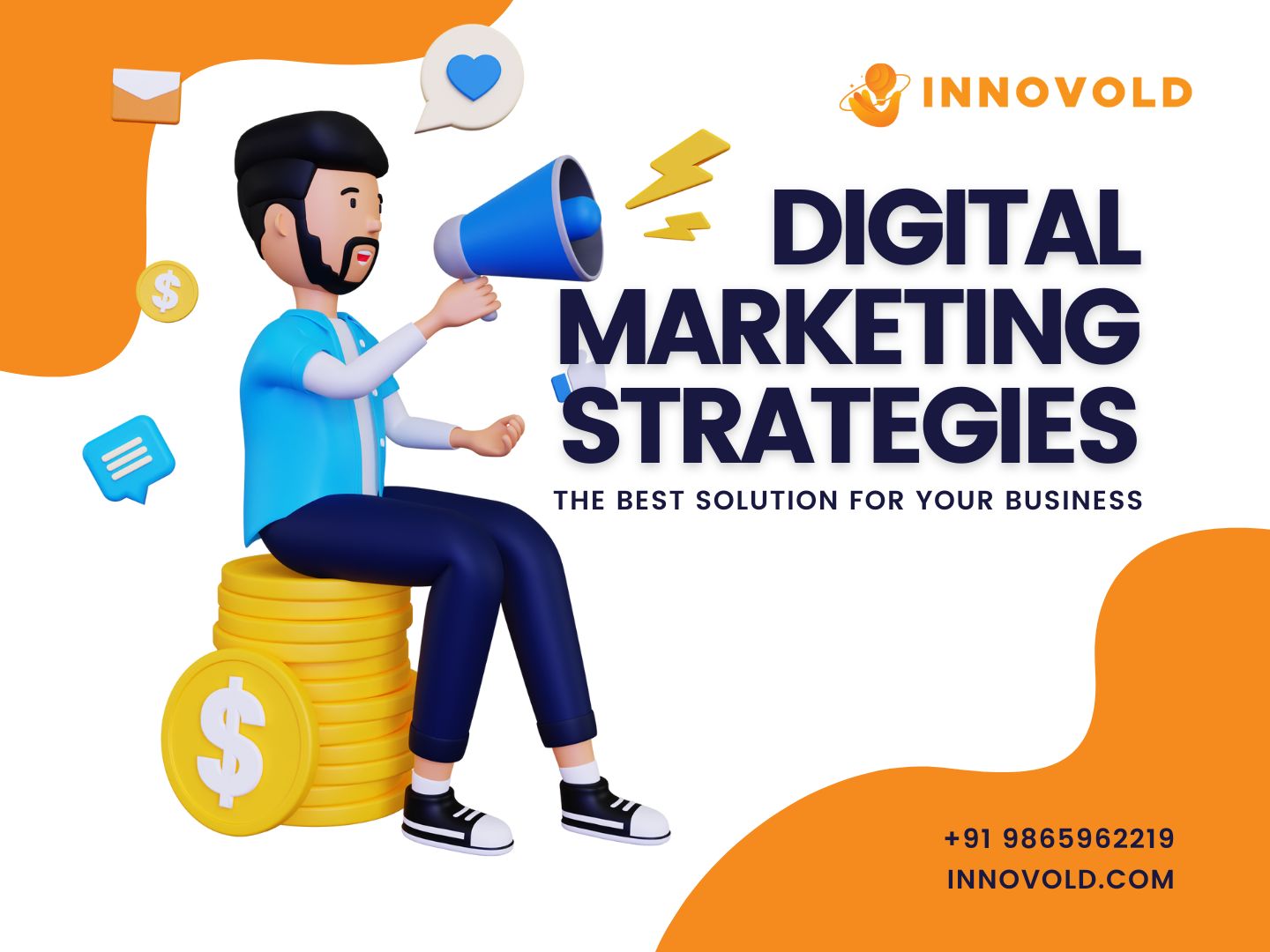In today’s digital age, understanding how digital marketing works is essential for businesses aiming to thrive in the competitive online landscape. While traditional marketing methods still hold significance, the power of digital marketing cannot be underestimated.

In this guide, we’ll delve into the intricacies of digital marketing, its components, and how it compares to traditional marketing.
A. Digital marketing encompasses all marketing efforts that utilize electronic devices or the internet to reach and engage with audiences. It includes various online channels and strategies aimed at promoting products, services, or brands to connect with potential customers.
B. Digital marketing holds immense significance in the modern business landscape due to its ability to reach a vast audience, target specific demographics, and track campaign performance in real time.
It offers cost-effective solutions, facilitates personalized interactions with consumers, and enables businesses to stay competitive in an increasingly digital world.
C. The key components of digital marketing include website optimization and SEO, content marketing, social media marketing, email marketing, pay-per-click advertising, and influencer marketing. Each component plays a crucial role in attracting, engaging, and converting leads into customers, forming a comprehensive digital marketing strategy essential for business growth and success.
Table of Contents
Understanding the Fundamentals of Digital Marketing
A. Definition and Evolution of Digital Marketing
The process of promoting products or services through digital channels like the Internet, social media, search engines, email, and other digital platforms is known as digital marketing. It encompasses a wide range of tactics and strategies aimed at reaching and engaging target audiences online.
The evolution of digital marketing can be traced back to the emergence of the Internet in the late 20th century. As the internet gained popularity, businesses began to explore new ways to connect with consumers online.
This led to the development of early digital marketing techniques such as email marketing, banner advertising, and website optimization.
Digital marketing has changed greatly throughout the years due to both shifts in customer behaviour and technological improvements.
The rise of social media platforms, the proliferation of mobile devices, and the increasing availability of data analytics tools have transformed the digital marketing landscape, enabling businesses to deliver more personalized and targeted marketing messages than ever before.
Today, digital marketing encompasses a diverse array of channels and strategies, from search engine optimization (SEO) and content marketing to social media advertising and influencer partnerships.
As technology continues to evolve, digital marketing will likely continue to adapt and innovate, offering businesses new opportunities to connect with their audiences in meaningful ways.
B. Comparison with Traditional Marketing Methods
While traditional marketing methods such as print, television, radio, and outdoor advertising still hold value, digital marketing offers several distinct advantages in today’s interconnected world.
- Reach and Targeting: Digital marketing allows businesses to reach a global audience and target specific demographics with unprecedented precision.
- Unlike traditional methods, which often rely on broad audience segmentation, digital marketing enables marketers to tailor their messages to individual preferences and behaviours.
- Cost-effectiveness: Digital marketing tends to be more cost-effective than traditional marketing methods. With digital channels, businesses can reach thousands of potential customers for a fraction of the cost of traditional advertising.
- Additionally, digital marketing offers greater flexibility in budget allocation, allowing businesses to adjust spending in real-time based on campaign performance.
- Measurability and Analytics: One of the key advantages of digital marketing is its ability to track and measure campaign performance in real time.
- With tools like Google Analytics, businesses can monitor website traffic, conversion rates, and other key metrics to evaluate the success of their marketing efforts. This level of measurability enables marketers to make data-driven decisions and optimize their campaigns for maximum effectiveness.
C. Advantages of Digital Marketing over Traditional Approaches
- Interactivity and Engagement:
- Digital marketing offers greater opportunities for interactivity and engagement than traditional methods.
- Through social media, blogs, and interactive content, businesses can foster meaningful interactions with their audience, building brand loyalty and trust over time.
- Personalization:
- Digital marketing allows for highly personalized marketing messages tailored to individual preferences and behaviours.
- By leveraging data analytics and segmentation techniques, businesses can deliver relevant content to the right audience at the right time, increasing the likelihood of conversion.
- Real-time Communication:
- Digital marketing enables businesses to communicate with their audience in real-time, fostering instant feedback and dialogue.
- Whether through social media comments, email responses, or live chat features, businesses can address customer inquiries and concerns promptly, enhancing the overall customer experience.
The Core Components of Digital Marketing
In the dynamic world of digital marketing, various components work together to form effective strategies that engage audiences, drive traffic, and boost conversions. Let’s explore the core components of digital marketing and uncover how each plays a vital role in achieving marketing objectives.
A. Website and SEO
Your website serves as the virtual storefront for your business in the online world. It’s the hub where potential customers land to learn more about your products or services. But having a website is just the beginning; ensuring its visibility and accessibility to your target audience is where Search Engine Optimization (SEO) comes into play.
- Importance of a website in digital marketing
- Your website acts as the cornerstone of your online presence. It’s where you showcase your brand, provide valuable information to your audience, and ultimately convert visitors into customers. Without a well-designed and optimized website, your digital marketing efforts may fall flat.
- Basics of Search Engine Optimization (SEO)
- SEO is the practice of making your website appear higher in search engine results pages (SERPs) for relevant keywords and phrases.
- By optimizing various elements such as meta tags, content, and site structure, you can improve your website’s visibility and attract organic traffic from search engines.
- Strategies to improve website visibility and ranking
- Effective SEO strategies include keyword research, creating high-quality content, optimizing on-page elements, building backlinks from reputable sources, and monitoring performance with analytics tools.
- By implementing these strategies consistently, you can enhance your website’s visibility and increase its chances of ranking higher in search engine results.
B. Content Marketing
Content is the fuel that powers your digital marketing efforts. It’s what educates, entertains, and engages your audience, driving them to take action and ultimately become customers.
- Definition and significance of content marketing:
- content marketing requires developing and delivering valuable, relevant, and consistent information to attract and retain a well-defined audience.
- It’s about providing value to your audience at every stage of their buyer’s journey, from awareness to conversion and beyond.
- Creating valuable and engaging content:
- Effective content speaks directly to your audience’s needs, interests, and pain points. Whether it’s blog posts, videos, infographics, or podcasts, your content should be informative, entertaining, and easily consumable.
- By delivering content that resonates with your audience, you can build trust, credibility, and loyalty over time.
- Distribution channels and content promotion:
- Once you’ve created compelling content, it’s essential to distribute it through various channels to reach your target audience effectively.
- This may include social media platforms, email newsletters, guest blogging, and content syndication.
- Additionally, promoting your content through paid channels such as social media ads or sponsored content can help amplify its reach and visibility.
C. Social Media Marketing
Social media has become an integral part of the digital marketing landscape, offering businesses unparalleled opportunities to connect and engage with their audience in real time.

- Role of social media in digital marketing:
- Social media platforms provide a powerful channel for brands to build awareness, foster relationships, and drive conversions.
- With billions of active users across various platforms, social media offers a vast and diverse audience for businesses to tap into.
- Platform selection and audience targeting:
- Choosing the right social media platforms depends on your target audience’s demographics, interests, and behaviour. Whether it’s Facebook, Instagram, Twitter, LinkedIn, or TikTok, each platform has its unique strengths and audience demographics.
- By understanding your audience and their preferred platforms, you can tailor your social media marketing efforts for maximum impact.
- Leveraging social media for brand awareness and engagement:
- Social media marketing involves creating and sharing content that resonates with your audience, sparking conversations, and driving engagement.
- This may include posting updates, sharing user-generated content, running contests or giveaways, and interacting with followers through comments and messages.
- By fostering a sense of community and conversation on social media, you can strengthen brand awareness and loyalty among your audience.
D. Email Marketing
Despite the rise of various communication channels, email remains one of the most effective tools for reaching and engaging with your audience directly.
- Overview of email marketing:
- Email marketing involves sending targeted emails to your subscribers to nurture leads, promote products or services, and drive conversions. It’s a highly personalized and cost-effective way to communicate with your audience, delivering relevant content right to their inbox.
- Building an email list and segmentation:
- Building an email list starts with capturing leads through various channels such as your website, social media, or events.
- Once you have a list of subscribers, segmenting them based on demographics, interests, or behaviour allows you to tailor your email content for maximum relevance and effectiveness. Segmentation ensures that each subscriber receives content that resonates with their specific needs and preferences.
- Crafting effective email campaigns and measuring success:
- Effective email campaigns are targeted, relevant, and engaging. Whether it’s a promotional offer, a newsletter, or a personalized recommendation, your email content should provide value and encourage action.
- Additionally, measuring key metrics such as open rates, click-through rates, and conversion rates allows you to gauge the success of your email campaigns and make data-driven adjustments to optimize performance.
E. Pay-Per-Click (PPC) Advertising
PPC advertising offers businesses a highly targeted and measurable way to reach their audience through paid search and display ads.
- Introduction to PPC advertising:
- PPC advertising enables companies to bid for ad placement on search engines and other digital platforms.
- Unlike traditional advertising where you pay for ad placement regardless of performance, with PPC advertising, you only pay when someone clicks on your ad, making it a cost-effective way to drive traffic and conversions.
- Platforms and ad formats:
- PPC advertising is available on various platforms, with Google Ads and Facebook Ads being the most popular options.
- Each platform offers different ad formats, including text ads, display ads, video ads, and shopping ads, allowing businesses to choose the format that best fits their goals and target audience.
- Budgeting, bidding strategies, and measuring ROI:
- Setting a budget and bidding strategy is crucial for PPC success. Whether it’s a daily budget, a bid strategy based on cost-per-click (CPC) or conversion, or automated bidding, your budget allocation should align with your campaign objectives.
- Additionally, measuring ROI through metrics such as return on ad spend (ROAS) allows you to assess the effectiveness of your PPC campaigns and optimize them for better performance over time.
F. Influencer Marketing
Influencer marketing leverages the influence and reach of individuals on social media to promote products or services and reach new audiences.
- Understanding influencer marketing and its impact:
- Influencer marketing involves collaborating with individuals, known as influencers, who have a significant following and influence on social media platforms.
- By partnering with influencers whose values align with your brand, you can tap into their loyal audience and leverage their credibility and trust to promote your products or services authentically.
- Identifying relevant influencers:
- Finding the right influencers for your brand involves researching and evaluating factors such as audience demographics, engagement rates, content quality, and brand alignment.
- Whether it’s macro-influencers with a large following or micro-influencers with a more niche audience, choosing influencers who resonate with your target market is key to a successful influencer marketing campaign.
- Collaborating with influencers for brand promotion:
- Once you’ve identified relevant influencers, collaborating with them involves outlining campaign goals, negotiating terms, and providing guidance on content creation and messaging.
- Whether it’s sponsored posts, product reviews, or brand partnerships, fostering a genuine relationship with influencers and allowing them creative freedom can lead to authentic and impactful brand promotion that resonates with their audience.
In this guide, we’ve explored digital marketing’s role in today’s business landscape, its evolution, and its advantages over traditional methods.
We’ve discussed key components:
- website optimization,
- SEO,
- Content marketing’s value, and
- social media’s role in engagement.
We’ve also covered email marketing’s lead nurturing, PPC’s targeted approach, and influencer marketing’s authenticity. By integrating these strategies, businesses can navigate the digital landscape effectively, fostering growth and success.



